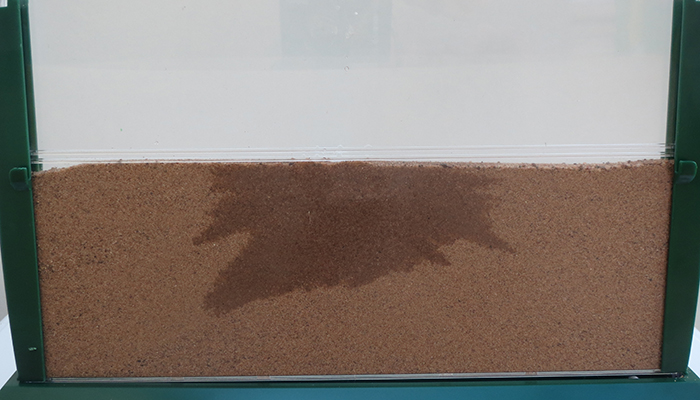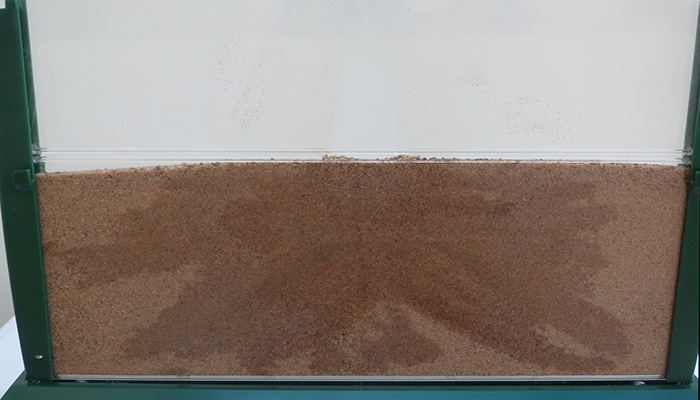By Dr Andy Owen and Henry Bechelet, Technical Managers ICL
The use of wetting agents is a key element of most modern greenkeeping management plans. Effective soil moisture management is essential for maintaining turf health and producing playing surfaces that are able to perform throughout the year. The ability to control soil moisture levels can also provide a positive driver for improving the quality of the grass types contained within the sward. This is why wetting agent technologies are used throughout the year and also why accurate moisture probes are now commonly utilised to guide irrigation strategies. Soil moisture management is vital for the production of high quality turf.
Ineffective soil moisture management can lead to a number of significant problems. Such issues would include the development of turf stress and other associated damaging conditions and it can also lead to the development of localised dry spots and general inconsistencies of performance. The jeopardy associated with ineffective soil moisture management is real and significant, which is why we need to manage it effectively.
The “ideal” soil moisture content for our turf is generally between 18 – 25 % volumetric moisture content (VMC). This is a level that keeps the turf healthy, the surfaces firm and can drive the sward composition towards more desirable grass species. The problem is that this level is fairly close to the point where some of the damaging conditions listed above can start to develop if we are not careful, especially during hot and dry conditions. So, we use our soil moisture probes to closely monitor the situation and also deploy our wetting agent technologies to help us exert a greater level of control.
There are lots of different wetting agents on the market and some are more effective than others. You are probably not aware that there are many types of surfactants and the different types can perform different functions. At ICL we employ a team of surfactant specialists at our research and development centre at Amega Sciences to carefully select individual surfactant ingredients and then formulate them together into blends that are designed to achieve the level of control on soil moisture content that we need. This is such an important aspect of turf management that we need to rely on the specialists.
In terms of different types of wetting agent ingredient, the largest category of surfactant type would be the “residual wetting agents”, which are also known as block co-polymers. These operate in the rootzone and allow water to permeate and be retained during their period of activity. These are used preventatively against the development of localised dry spot and they also help us keep the rootzone from quickly drying out as well as facilitating effective rewetting when needed. There are lots of different residual wetting agent ingredients that have different levels of effectiveness and longevity. The quality of ingredients will influence the level of control we can exert.

Image 1. A professional sportsturf medium-coarse sand, showing no hydrophobicity. Ten millilitres of water added will only wet a certain volume of the sand.
The second largest category of wetting agent ingredients would be the penetrant surfactants. These are designed to further reduce the surface tension of water and allow it to spread and move more easily. These are a very different type of surfactant chemistry to the residual wetting agents and they are diverse and not easily grouped and again, some are more effective than others. For instance, our specialist surfactant chemists at ICL have identified the new ingredients that are used in the effective and unique penetrant formulation H2Pro FlowSmart. Often these penetrant wetting agents are used when there is excess water and there is a need to improve surface drainage and water movement from the surface of the turf, but they will also work in a range of other situations.

Image 2. A professional sportsturf medium-coarse sand, showing no hydrophobicity. Ten millilitres of H2Pro Flowsmart (diluted to label rate) added.
The trick with producing super-effective formulations is to create the right blend of ingredients. Formulations such as Qualibra from Syngenta or H2Pro TriSmart from ICL contain a blend of penetrants and block co-polymers to maximise the performance of the treatments. In these formulations the penetrant is specially selected to aid quick water penetration into the soil but also act as a vehicle to help the block co-polymer be spread evenly and deeper into the soil profile. They are designed to allow you to keep the moisture content of the greens within your target area without running the risk of problems developing, even during extreme conditions. These specialist formulations are designed to give you a greater level of control.
The business of developing new surfactant blends is a long process that starts with laboratory screening of potential ingredients, before developing and testing the best performing blends out into the field for extensive trial evaluation. In general, we would say that it takes 3-4 years of intensive work to come up with a new formulation that meets the desired standards of the modern turf manager . At ICL we have recently completed trials in the UK and Ireland, America, Australia and Spain to test our innovations in a range of conditions.
So, effective soil moisture management is important if we are to create turf that is able to perform to this highest standards and if we want to drive long-term improvements. Soil moisture management is difficult because our target ranges are quite close to the point where significant problems can arise. Along with good cultural management, we need to closely monitor soil moisture content to make sure that they don’t drop down to problem levels but we also use wetting agent technologies to provide us with a greater level of control. Well formulated wetting agents can help you keep the soil moisture content at the ideal level more easily without the undue risk of problems arising. At ICL we understand how important effective soil moisture management is and so we employ specialists and take a great deal of time to develop what we would consider to be optimal blended formulations. Effective soil moisture management is vitally important, which is why we bother to develop and use the best technologies.
